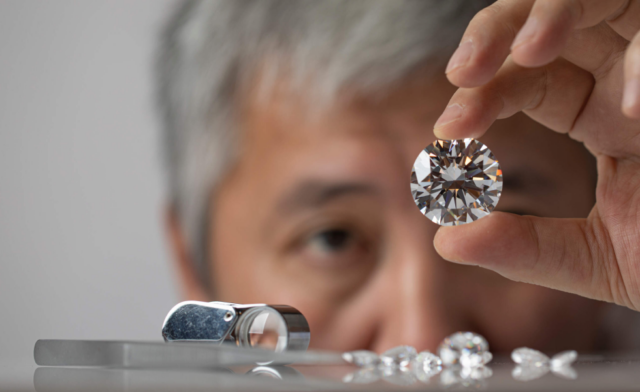For centuries, diamonds have been revered as symbols of love, beauty, and wealth. But as technology advances and sustainability becomes increasingly important, a new contender has emerged in this world: lab-grown diamonds.
Lab-grown diamonds, also known as cultured or synthetic diamonds, are created in a controlled environment that replicates the natural process of diamond formation. Using advanced technology, its seeds are placed in a chamber that mimics the high-pressure and high-temperature conditions found deep within the earth, allowing the crystals to grow over a period of several weeks to several months.
One of the biggest advantages of lab-grown diamonds is their sustainability

Traditional diamond mining can have a devastating impact on the environment and on local communities. In addition to deforestation and soil erosion, mining can lead to water pollution and the destruction of habitats for wildlife. The human toll can be even more severe, with reports of forced labor and exploitation in some mines. In contrast, lab-grown diamonds have a much smaller environmental footprint.
According to a study by Trucost, a research firm that specializes in sustainability, they have up to 10 times less of an environmental impact than mined ones. They require less energy to produce, generate fewer greenhouse gas emissions, and produce less waste. Additionally, since they are created in a lab, there is no need for mining, which eliminates the human rights abuses associated with their trade.
Another advantage is their affordability

Mined diamonds are subject to the laws of supply and demand, with prices fluctuating based on availability and consumer demand. In contrast, lab-grown ones can be produced in large quantities, which keeps their prices lower than traditional diamonds.
They also offer more flexibility in terms of customization. Since they are created in a lab, they can be produced in a wide range of sizes, shapes, and colors. This makes it easier for consumers to find the one that meets their specific needs and preferences.
One area where lab-grown diamonds may have an advantage over mined ones is in the realm of ethical considerations. Because they are created in a controlled environment, there is less risk of human rights abuses or environmental damage associated with their production. Additionally, many manufacturers are committed to ethical and sustainable practices, such as using renewable energy and recycled materials.
Of course, like any new technology, they have their challenges
– One challenge is educating consumers about the differences between lab-grown and mined diamonds. While lab-grown ones offer many advantages, some consumers may still prefer the idea of a natural, mined one.
– Another challenge is ensuring that they are properly regulated to prevent fraud or deception in the marketplace.
In conclusion, lab-grown diamonds are a promising alternative to mined ones, offering a more sustainable, affordable, and customizable option for consumers. While there are still some misconceptions and challenges associated with them, their advantages make them a valuable addition to the diamond industry.
Whether you are a consumer, a diamond industry professional, or simply someone interested in sustainability and technology, they are worth exploring.




